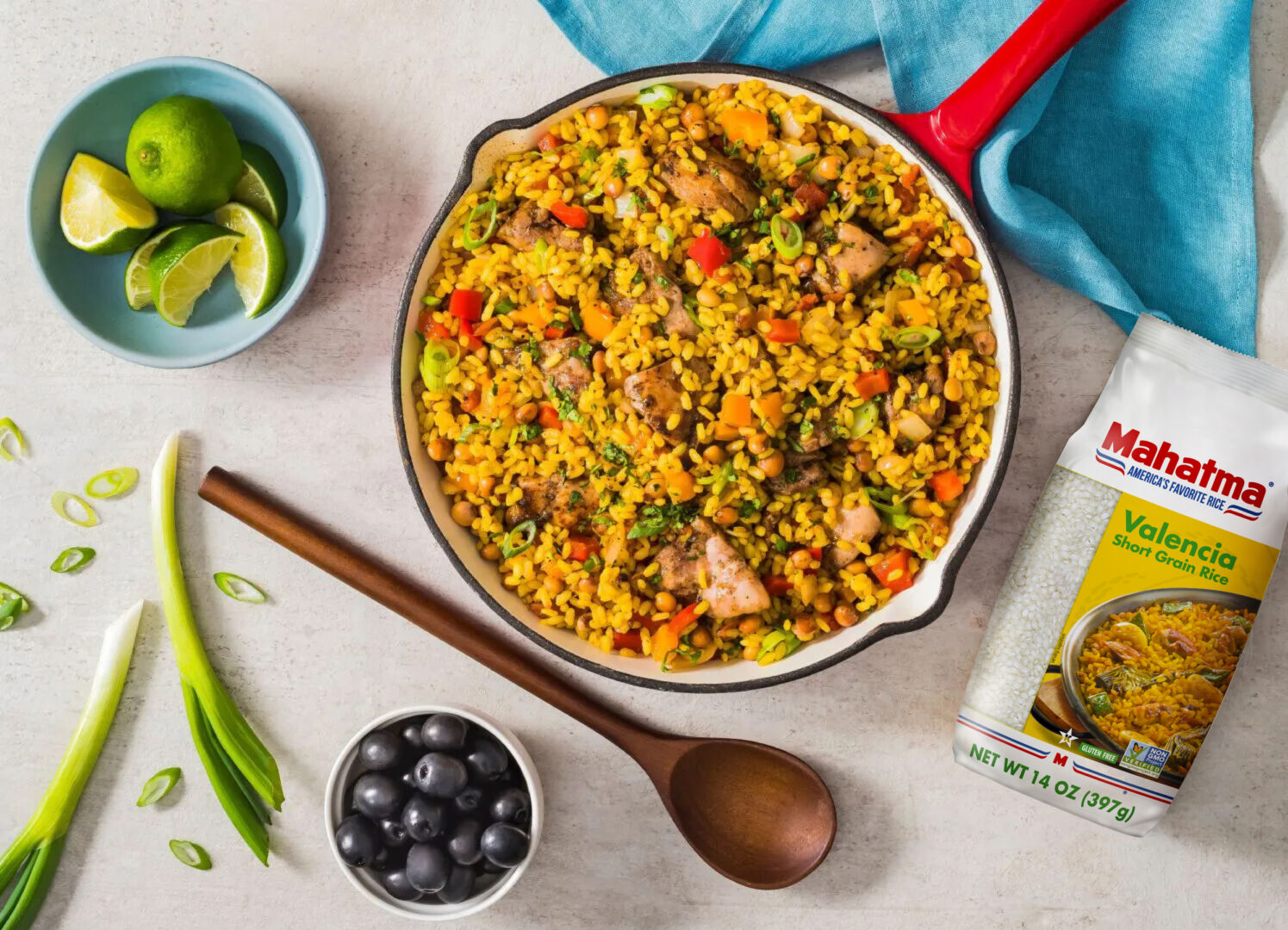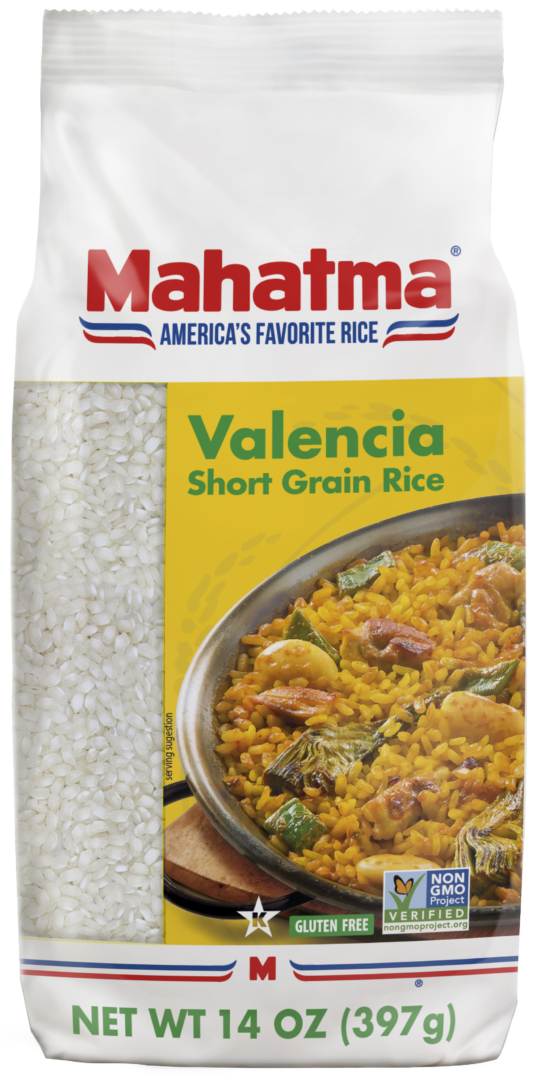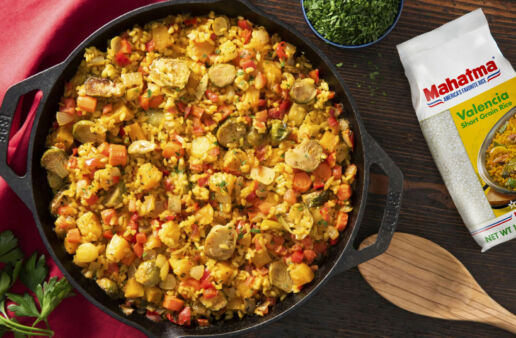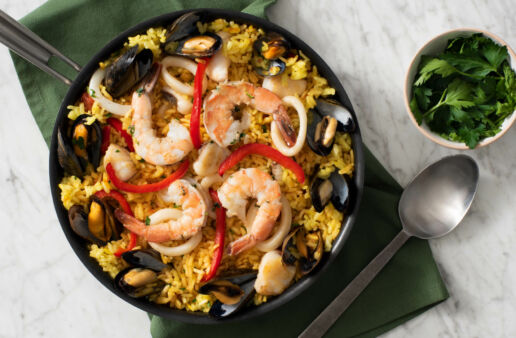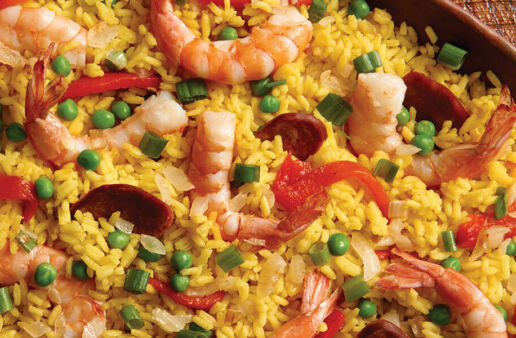
Jerk Chicken Paella
Instructions
Step 1
Season chicken with salt and pepper. Heat oil in large high-sided skillet set over medium heat; cook chicken for 3 to 5 minutes or until starting to brown. Transfer to plate.
Step 2
Stir in onion and garlic; cook for 3 to 5 minutes or until softened. Stir in rice, orange and red bell peppers, thyme, turmeric and curry powder; cook for 2 to 3 minutes or until peppers are slightly softened.
Step 3
Return chicken to skillet. Stir in jerk paste; cook for 2 to 3 minutes or until well coated and fragrant.
Step 4
Stir in broth, tomatoes and pigeon peas; bring to boil. Reduce heat to medium-low; cover and cook for 20 to 25 minutes or until most of the liquid is absorbed, rice is tender, chicken is cooked through and veggies are tender.
Step 5
Stir in green onions and cilantro. Serve with lime wedges.
About Thyme
Thyme has a unique and savory taste that complements many proteins, including chicken, beef, and turkey. It is best to use fresh thyme when cooking, as it has a stronger flavor than the dried alternative. Fresh thyme can be found at many grocery stores, or you can easily grow it at home in a backyard garden or windowsill planter.
To prepare fresh thyme for cooking, remove the leaves from the stem by holding the stem at the top and gently sliding your thumb and forefinger down the stem in the opposite direction of the leaves. This will quickly and easily remove the leaves, which can then be used in your recipe.
Contents
What is Curry Powder?
Spices are combined to create curry powder, which has a yellow color. Contrary to what many people think, it is not a common component in Indian cuisine. Curry powder was developed by the Brits to simulate the flavor of Indian cuisine. The name “curry” is used to describe a common Indian food, although it does not refer to the spice mixture; rather, it describes the dish itself, which consists of meat and vegetables in a sauce or gravy. Garam masala is the spice mixture that is most frequently used in Indian curries.
Turmeric is one of the primary components in curry powder. Additional spices that can be used range from fennel seed, mustard seed, and black pepper to ginger, cinnamon, cloves, and garlic.
Curry Powder Uses
Curry powder has a place in the spice cabinet even though it is not intended for use in traditional Indian cuisine because it may provide a range of distinctive flavor. Hummus, egg salad, roasted vegetables, pureed soups, popcorn, and hummus can all be seasoned with curry powder. It will add some warmth and depth to an ordinary recipe.
How to Cook with Curry Powder
When adding this spice mixture to the dish, it is best to combine it with a liquid (such broth or coconut milk) or yogurt to help the curry powder’s flavors permeate the other ingredients. Curry powder is also intended for slower cooking methods so the flavors can develop.
Taste
Curry powder is an earthy, warm spice with a hint of brightness that mixes both sweet and savory flavors. Depending on the type and quantity of pepper used, the powder can be mild or spicy; a moderate blend will list ginger and black pepper as ingredients, while a spicy blend will list chile peppers.
If you are looking for an easy side dish, try our: easy coconut rice.
Ingredient Substitutions
For easy Jerk Pork Paella, substitute pork tenderloin for chicken.
